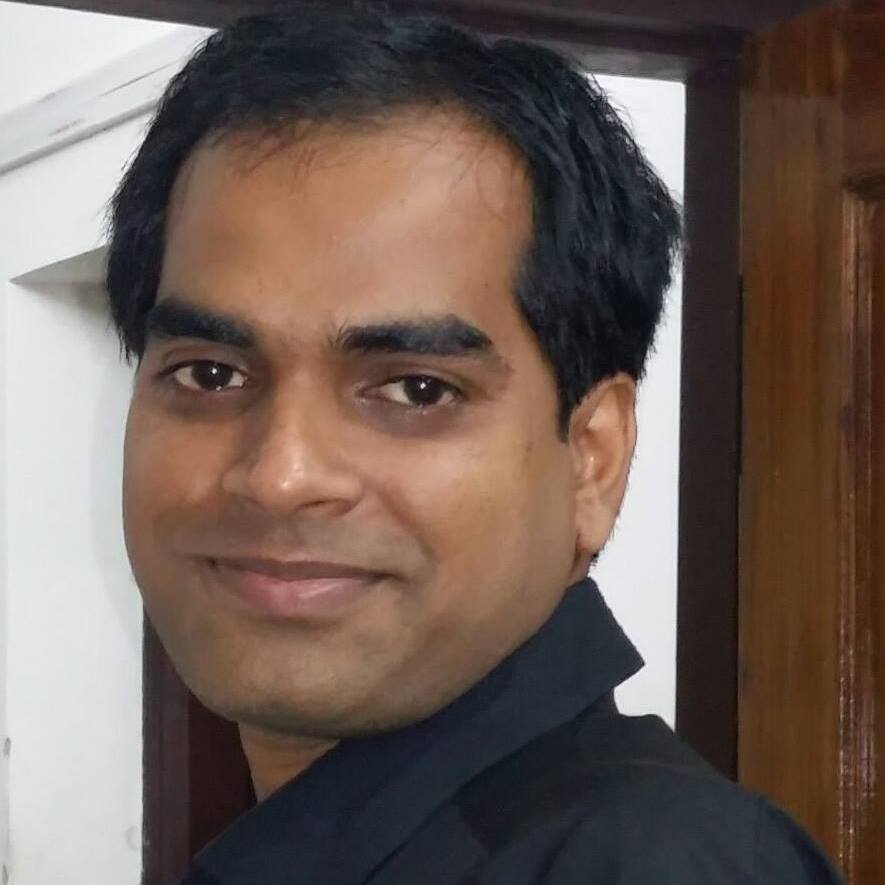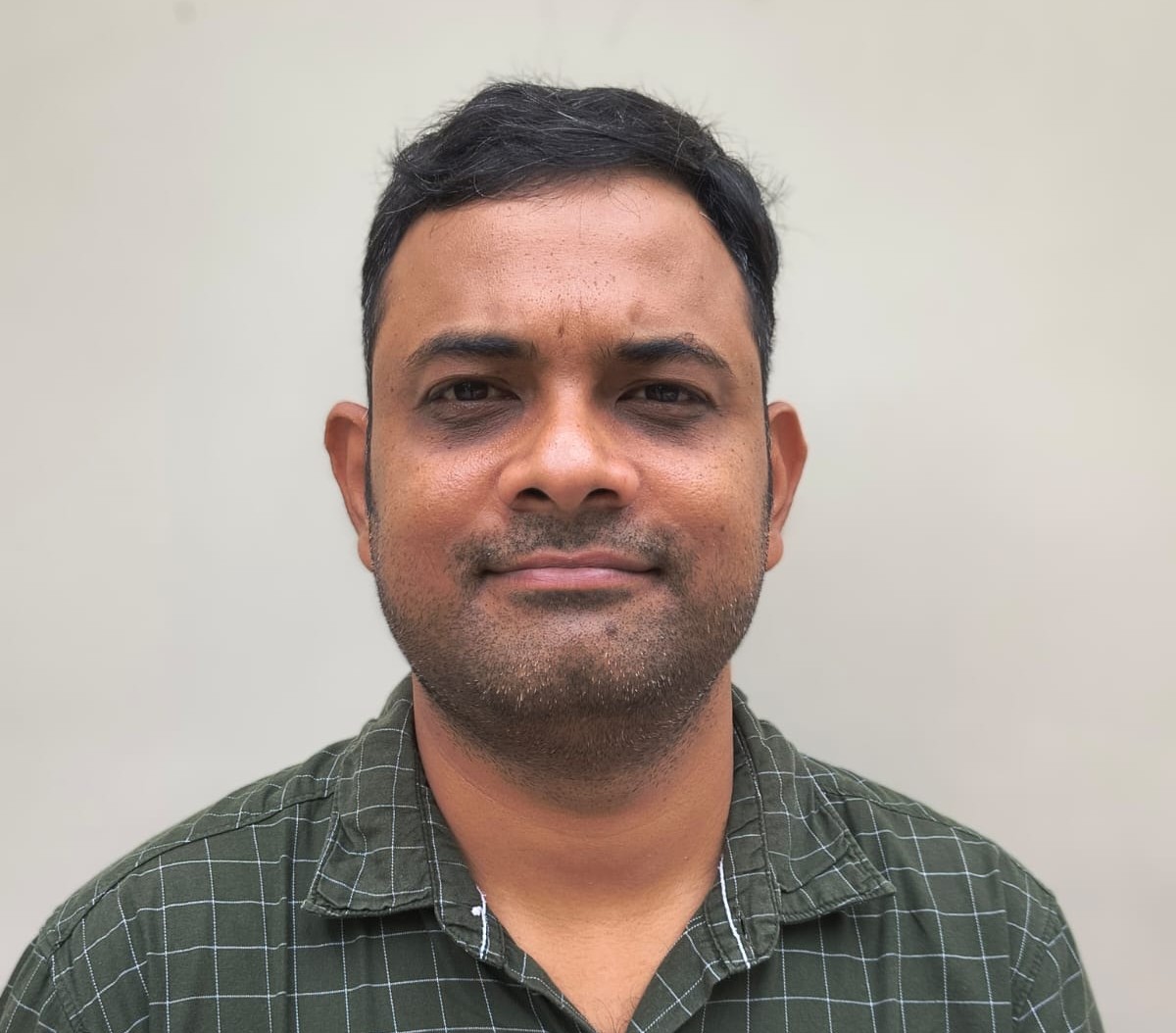It was in 1993 that institutions of self-government, known as Panchayati Raj Institutions (PRIs), were first institutionalised in India. 2018 marks 25 years since they came into existence through the 73rd Constitutional Amendment.
The thought process behind the Panchayati Raj system was to make democracy functional at the local level, and driven by citizens’ needs and participation. It was therefore introduced as a three-tier system that decentralised governance, decision making, and local development.
However today, the question remains: to what extent did the PRIs achieve the above stated goals? Before we get to that however, let’s look at the way PRIs took shape.

How did PRIs come into being?
While the panchayat is an old concept in India—through its presence as caste-based panchayats in villages—the structure, processes, and functions of the PRI system today are totally different.
Mahatma Gandhi was among the first and most important leaders to advocate for Panchayati Raj. His vision of a village panchayat was a small self-sufficient republic with individual freedom, opportunities for all, and full participation of the people.
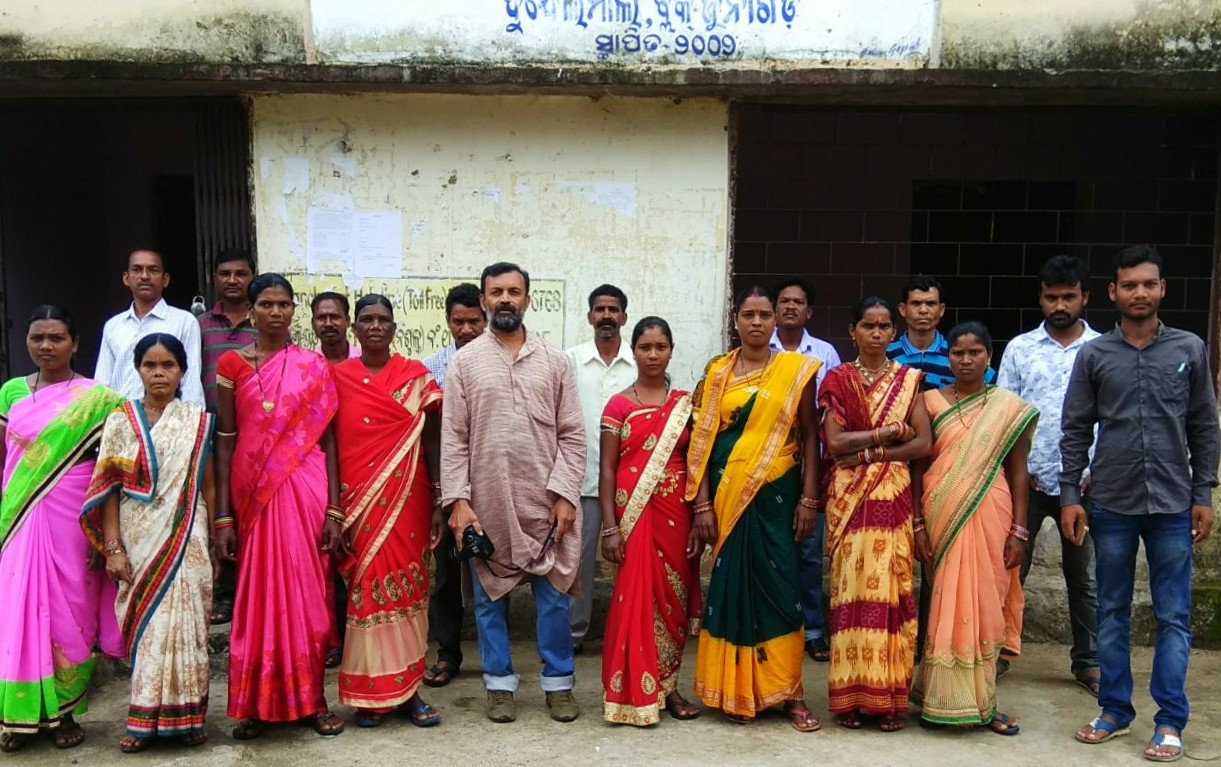
Dr Tribhuban Panda, Sarpanch, Dundelmal Gram Panchayat, Kalahandi district, Odisha with other PRI members | Photo courtesy: Dr Tribhuban Panda
While the idea seemed revolutionary at the time, it was Gandhi’s endorsement of it that perhaps explains why the PRI system was partially accepted by the makers of our constitution. PRIs were mentioned in Article 40 only as a Directive Principle of State Policy in 1950. It stated that steps shall be taken to organise village panchayats, and endow them with the powers and authority necessary for them to act as units of self-government.
However, around the same time, the central government took a different route to facilitate local development, launching the Community Development Programme (CDP) as a pilot in 1952. The CDP tried to push an expert-driven, top-down development processes, moving away from the idea of organising village communities and self-government.
The CDP, however, was not very successful, despite strong government backing. The reason for this was that under CDP, people were neither involved nor did they participate in their own development. In fact, this was why the Balwant Rai Mehta Committee was formed five years later, in January 1957, to review both the CDP and the National Extension Service, and suggest measures for improvement.

The committee’s report recommended that, “the government should divest itself completely of certain duties and responsibilities and devolve them to a body which will have the entire charge of all development work within its jurisdiction, reserving to itself only the functions of guidance, supervision and higher planning”.
A three tier elected self-government known as the Panchayati Raj Institution was suggested—with specific duties and responsibilities outlined—thereby formalising what was earlier just a statement of intent in Article 40.
Following the Government of India’s acceptance of these recommendations, various states started adopting the PRI system, with Rajasthan leading the pack in 1959, followed by Andhra Pradesh and Tamil Nadu, and other states shortly after. Between 1959 and 1988 various committees were formed to study the PRI system and suggest recommendations, which ultimately culminated in Panchayati Raj Institutions being officially recognised through the passing of 73rd Constitutional Amendment Act.
How do PRIs function?
The amendment made it obligatory for the states to establish PRIs in accordance with the act, and the Gram Panchayat, Panchayat Samiti, and Zilla Parishad were introduced as elected local bodies. The Sarpanch, also known as panch or pradhan in different states became the elected head of the Panchayat through a formal electoral process.
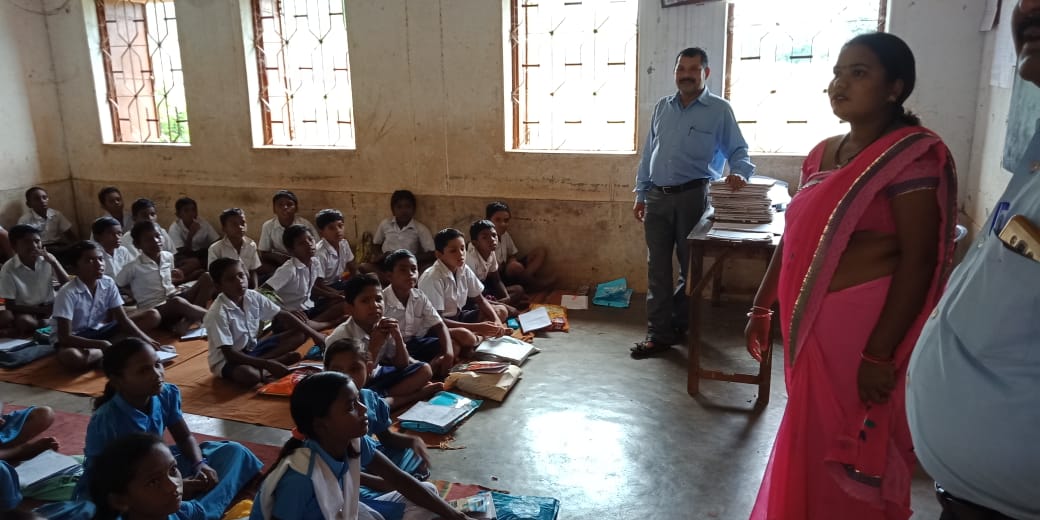
Ms Ranjita Suna, Sarpanch, Luhasinga Gram Panchayt monitors a school in her Panchayat | Photo courtesy: Fakira Rout
The Gram Sabha is recognised as the people’s parliament at the village level—the lowest level of administration and comprises all adult members of the village. It has the power to plan, approve, and monitor various development programmes for its village. It has a constitutional mandate, and the elected PRIs are accountable to the Gram Sabha.
There have been further iterations since, such as the Panchayat Extension to Scheduled Areas (PESA) Act of 1996, which gave greater autonomy to people residing in tribal and forest areas.
Why are PRIs important, and what have they achieved till date?
There were two basic ideas behind introducing such a system. First, it would decentralise the democratic set up by widening political representation of different social groups, especially women. Second, it would enable the building of efficient local institutions that could plan, execute, and monitor their communities’ development through a participatory approach.
Today, 25 years on, these initial ideas must be seen as success indicators of the PRI system in India.
1. Decentralising the democratic process
In India, election to these local bodies has been carried out on a regular basis, in most cases, freely and fairly. Though some states have seen allegations of violence, these are primarily law and order issues.
Further, the formation of 2,49,016 Gram Panchayats, 6,603 Intermediate Panchayats and 606 Zilla Panchayats indicates the reach of decentralised governance in India. Out of 32 states, 19 have taken measures and reserved 50% of seats for women in these local bodies.
As per the available data, in 2014, there were 29,50,128 elected Panchayati Raj representatives (the recent figures would be around three million), of which 19% were from Scheduled Caste, 12% from Scheduled Tribe communities, and 46% were women. The PRI system has therefore definitely deepened political representation in the country.
The PRI system has therefore definitely deepened political representation in the country.
This inclusion and representation of women, scheduled tribes and castes is critical given that the socio-cultural systems in India are mostly caste and gender biased. Equal representation is essential if we have to focus on particular developmental issues and bring in equity.
2. The devolution of power
The second idea is critical, as it not only speaks to the role played by PRIs, but also reflects the willingness of both the central and state governments to give real power to these institutions. Without this devolution of power, decentralised self-government has no meaning.
The 73rd Amendment provisioned for 29 subject matters in the 11th schedule, over which PRIs would have complete power to plan, execute, and monitor. However, the current status of these differs across states. The funds, function and functionaries that form the three main components of the devolution of power vary, and thereby weaken the system in many respects.
The devolution of power reflects the willingness of both the central and state governments to give real power to these institutions.
A devolution report published by the Ministry of Panchayati Raj in 2015-16, mentioned that devolution has two main aspects: the operational core that includes funds, function, functionaries, and the support system that includes capacity building of PRIs, operationalising constitutional mechanisms and introducing systems of transparency and accountability.
From the reflections of the report, it can be concluded that the real devolution still has a long way to go. In terms of devolving function, functionary and finance, Kerala, Tamil Nadu, Maharashtra, and Karnataka top the list, whereas Punjab, Jammu and Kashmir, and Jharkhand are at the bottom.
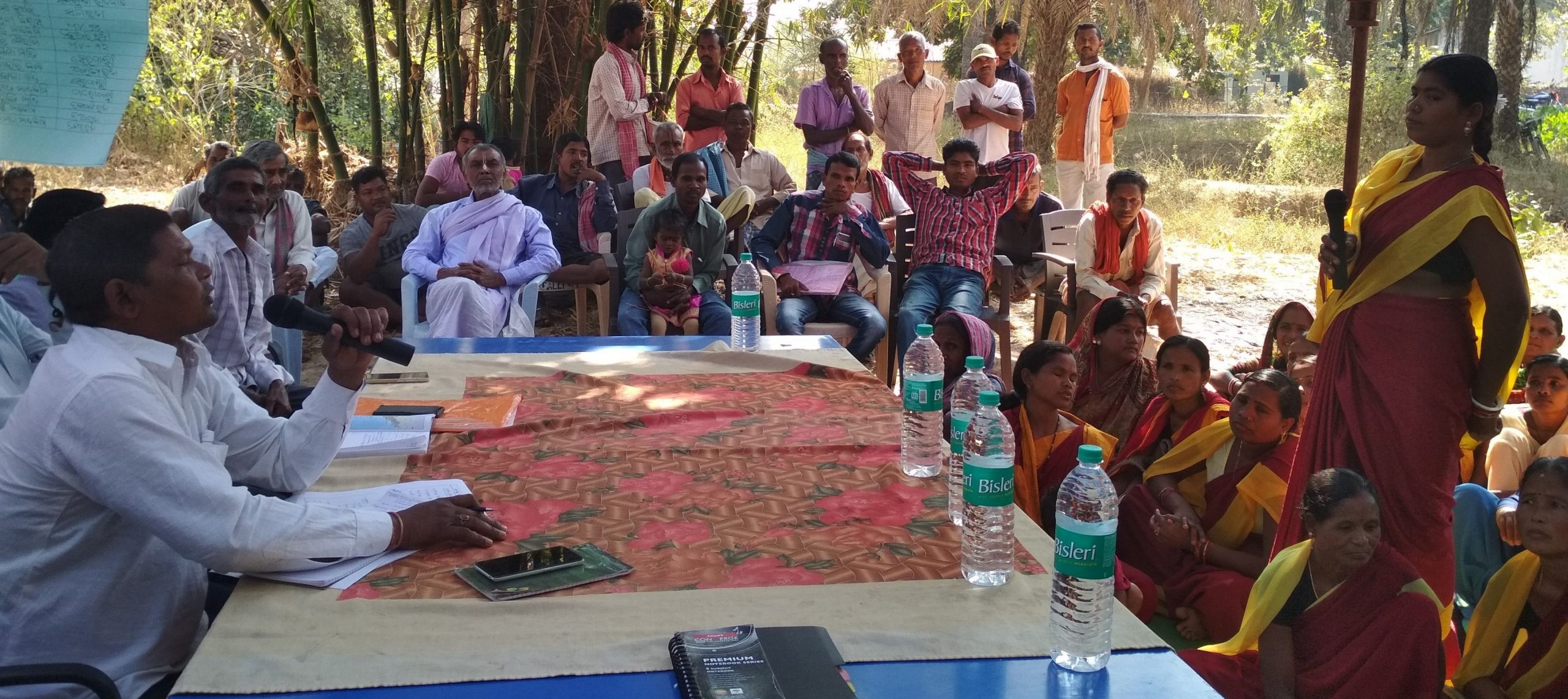
Mr Dashrath Duruka, Sarpanch, Sherpalli Gram Panchayat, Malkangiri District, Odisha seeking clarifications on ICDS service from an ICDS worker in a Gram Sabh | Photo courtesy: Jitendra Rath
What are the gaps?
Despite the well-thought through provisions, there are several problems in how PRIs function in practice.
- State leadership and officials are unwilling to provide real power to local elected leaders.
- Institutional structures like the district planning boards, created to expedite decentralised planning, are either non-functional or do not give priority to PRIs.
- Limited efforts have been made to empower elected PRI representatives with their constitutional functions; the focus has mostly been on trainings on the schemes and programmes.
- The state and central government have also started creating separate structures or units for implementing specific projects on education, health, and so on; this limits the role and powers of the PRIs.
As a result, in many cases, PRI representatives have become mere implementers and followers where as the idea was to build them as local leaders leading local development.
What steps can be taken to make PRIs truly effective?
The time has come to move from political representation to power devolution. There is a need for the state political leadership to accept the importance of PRIs, and devolve power to them as mandated in the Constitution of India. Building the capacities of the PRIs not as mere implementers of the projects but as planners and evaluators would help strengthen the institution.
There is also a need for elected local leaders to come together with their constituents, and demand more control and autonomy as enshrined to them by the Constitution of India.

